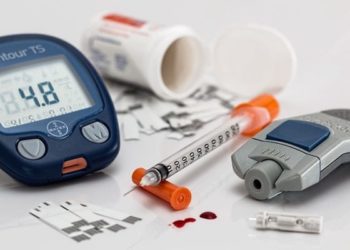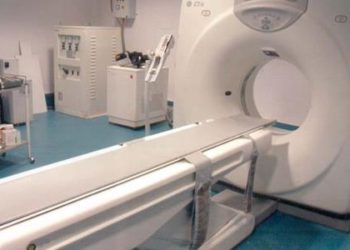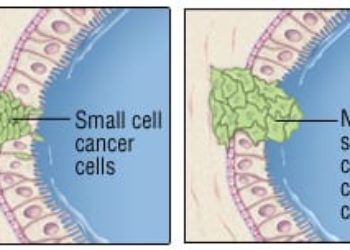2 Minute Medicine Rewind August 29, 2016
There has been an increasing number of studies examining the relationship between functional gastrointestinal disorders and migraine in adults, however, few studies have explored this in the pediatric population. In this retrospective case-control study, researchers sought to analyze this association by compared 424 children and adolescents aged 6-17 who presented to the emergency department of four tertiary hospitals in France and Italy and diagnosed with migraine or tension headache, to 648 controls who presented with minor injury and no history of recurrent headache. Significantly more patients in the migraine group were diagnosed with functional GI disorders compared to patients who presented with minor injury (18% vs. 32% respectively, p < 0.0001). In particular, there was a significant positive association with three GI disorders: functional dyspepsia (odds ratio 10.76, 95% CI: 3.52 to 32.85, p < 0.0001), irritable bowel syndrome (odds ratio 3.47, 95% CI: 1.81 to 6.62, p = 0.0002), and abdominal migraine (odds ratio 5.87, 95% CI: 0.14 to 0.84, p = 0.02). Interestingly, there was a negative association between migraine and functional constipation (odds ratio 0.34, 95% CI: 0.14 to 0.84, p = 0.02). There was no difference in prevalence of these disorders in patients with tension-type headache compared to controls. These results serve to confirm the specificity of the association between migraine and functional GI disorders and give support for a possible common pathophysiological link.
A Randomized Trial of Focused Ultrasound Thalamotomy for Essential Tremor
Propranolol and primidone are the first line medications for essential tremor and have been shown to reduce tremor by 60% in 50% of patients. For patients who have medication-refractory essential tremor and do not want an invasive craniotomy procedure, MRI-guided focused ultrasound thalamotomy shows promise. In this double-blind, randomized control trial, 76 patients with medication-refractory essential tremor were randomized in a 3:1 ratio to ultrasound thalamotomy or a sham procedure to study its effects on the primary outcome of hand tremor score. Researchers found a significant improvement in hand tremor scores from baseline to 3 months based on the CRST (Clinical Rating Scale for Tremor)for patients who underwent focused ultrasound thalamotomy (47% vs. 0.1% improvement in controls). The between-group difference was 8.3 points (95% CI: 5.9 to 10.7, p < 0.001). Furthermore, this improvement persisted during the entire 12-month study period. Secondary outcome measures including limitations in daily activities and quality of life scores also had significant improvement (p < 0.001). 36% of patients did experience gait disturbance and 38% experienced paresthesias or numbness as negative side effects. Prior studies have focused on ultrasound thalamotomy as an option for early stage disease, however this trial shows the procedure’s efficacy in decreasing essential tremor for patients with more advanced disease.
Inotuzumab Ozogamicin versus Standard Therapy for Acute Lymphoblastic Leukemia
The five year survival rate for adult patients with relapsed or refractory acute lymphoblastic leukemia is less than 10%, even for those undergoing standard of care treatment. Inotuzumab ozogamicin is an anti-CD22 antibody conjugated to calicheamicin. In this phase 3 randomized control trial, 326 adults with relapsed or refractory ALL were randomized to receive either inotuzumab ozogamicin or standard intensive chemotherapy to determine whether the antibody would produce higher rates of remission and overall survival. It was found that the inotuzumab ozogamicin group had a significantly higher rate of complete remission compared to standard chemotherapy (80.7%vs. 29.4%, p < 0.001). In addition, significantly more of these patients had results below the threshold for minimal disease (0.01% marrow blasts) (78.4% vs. 28.1%, p < 0.001), and longer remission durations (median of 4.6 months vs. 3.1 months, p = 0.03). In the secondary survival analysis, patients who received inotuzumab ozogamicin had longer progression-free survival (median of 0.5 months vs. 1.8 months, hazard ratio 0.45, p< 0.001). Veno-occlusive liver disease was the major side effect, observed in 11% of inotuzumab ozogamicin patients. While this new antibody still awaits approval, oncologists are hopeful it could become a valuable addition to currently available treatment options for refractory ALL.
Chronic kidney disease is a worldwide problem directly tied to end-stage renal disease and cardiovascular disease. The China Stroke Primary Prevention Trial (CSPPT) published in 2015 studied the efficacy of combined enalapril treatment with folic acid compared to enalapril alone in reducing first stroke risk in hypertensive adults. In this renal substudy, researchers performed a randomized, double-blind control trial to investigate the same therapy’s effects on progression of chronic kidney disease in hypertensive adults. 15,104 adults from the Jiangsu province who had an estimated glomerular filtration rate (eGFR) of 30 mL/min/1.73m2 or higher were randomized to receive either a daily oral dose of 10 mg enalapril and 0.8 mg folic acid (n = 7,545) or 10 mg enalapril alone (n = 7,559). Of these participants, 1,671 were diagnosed with CKD. The combined enalapril-folic acid treatment group exhibited a 21% decrease in the odds of CKD progression, the primary outcome (odds ratio 0.79, 95% CI: 0.62 to 1.00). The group also had a significantly lower rate of eGFR decline (1.28% vs. 1.42% per year, p = 0.02). Patients with CKD especially benefited from the combined therapy, with a 56% reduction in CKD progression (odds ratio 0.44, 95% CI: 0.26 to 0.75) and a 44% reduction in rate of eGFR decline (p < 0.001). This study suggests that folic acid therapy, when added to enalapril, could be a potential cost-effective way to slow down CKD progression in hypertensive patients with mild to moderate renal disease.
Music Therapy for Preterm Infants and Their Parents: A Meta-analysis
In NICUs around the country, nonpharmacological early intervention methods such as kangaroo care and music therapy are commonly encouraged to help lessen the adverse consequences of prematurity. Although clinical evidence supporting music therapy has increased over time, there has been a lack of up-to-date systematic reviews analyzing the effect of music therapy implemented by or in consultation with an actual trained music therapist. In this meta-analysis, investigators pulled 14 randomized control trials meeting inclusion criteria from multiple databases (PubMed/Medline, PsycINFO, Embase, Cochrane Database of Systematic Reviews, CINAHL, ERIC, Web of Science, RILM) to review the effect of music therapy on preterm infants and their parents during NICU hospitalization and after hospital discharge. In total, 964 infants and 266 parents were included. Significant large effects favoring music therapy were found for infant respiratory rate (mean difference of -3.91/min, 95% CI: -7.8 to -0.03) and maternal anxiety (mean difference of -1.82, 95% CI: -2.422 to -1.22). Most results demonstrated high heterogeneity and were limited in assessing long term outcomes, so future studies are needed. Nonetheless, this meta-analysis provides updated evidence that music therapy, often involving something as simple as parents’ singing, can bring direct benefits to infants’ respiratory rates and mothers’ stress levels.
Image: PD
©2016 2 Minute Medicine, Inc. All rights reserved. No works may be reproduced without expressed written consent from 2 Minute Medicine, Inc. Inquire about licensing here. No article should be construed as medical advice and is not intended as such by the authors or by 2 Minute Medicine, Inc.









